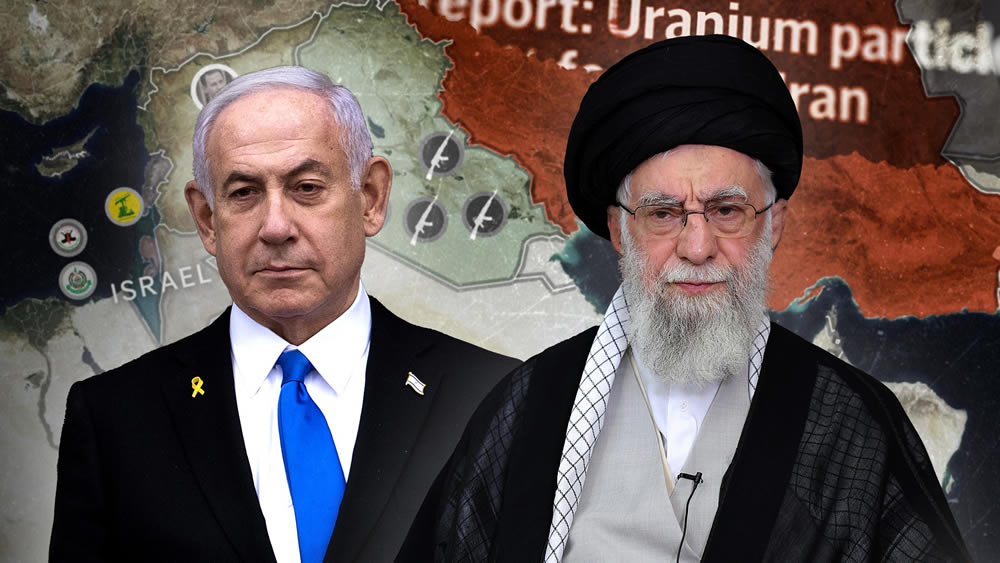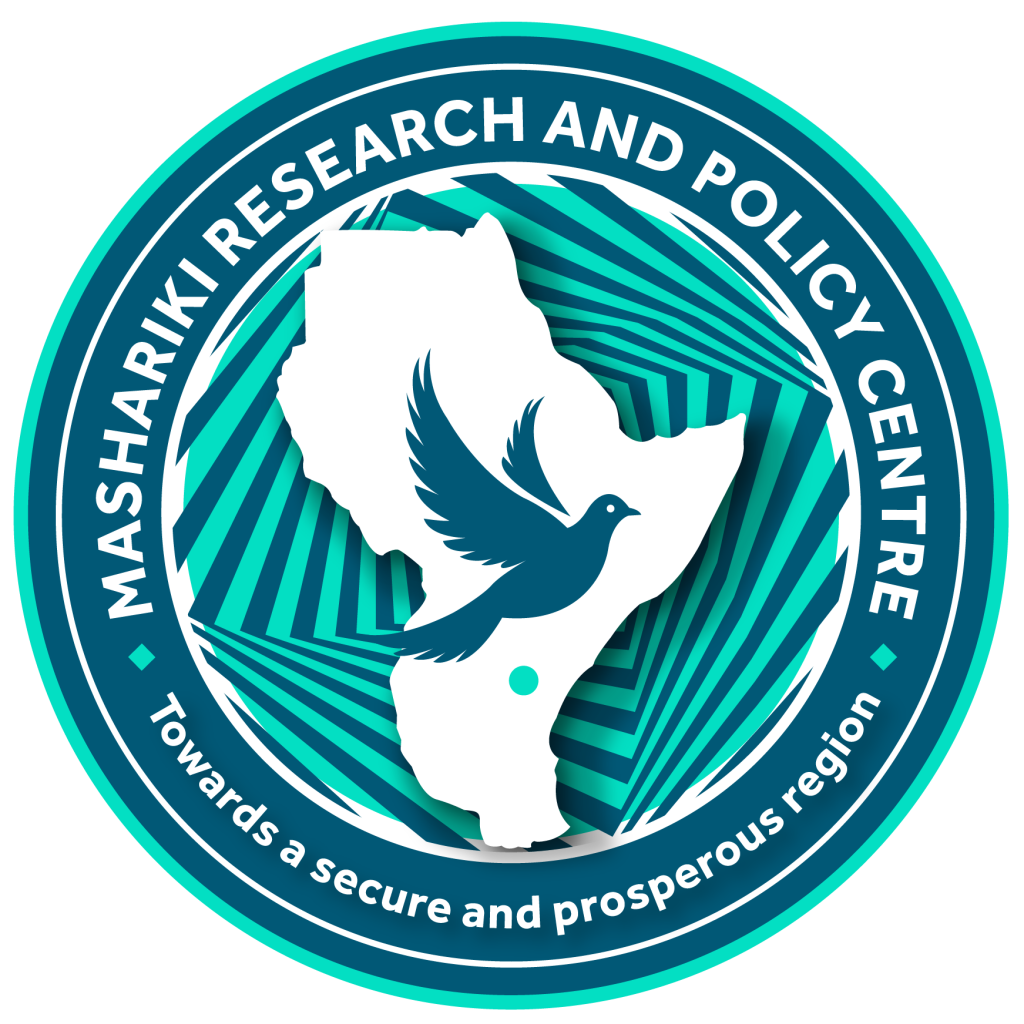
The June 2025 escalation of war between Israel and Iran marks a pivotal turn in Middle Eastern geopolitics — one that reverberates far beyond the conflict’s immediate boundaries. Triggered by Israeli airstrikes on Iranian nuclear and military facilities and met with retaliatory salvos of missiles and drones from Tehran (Reuters, 2025; Mahmoudian, 2025), this is not merely a bilateral flashpoint. It is the collapse of a long-standing security and deterrence architecture that has shaped the Middle East for decades. For Eastern Africa, this crisis is neither abstract nor distant. Its effects are real, immediate, and deeply unsettling. The war threatens to redraw regional security alignments, disrupt vital maritime corridors, undermine economic stability, and inflame proxy dynamics that have long shaped conflict landscapes across Eastern African spaces. Its deeper implications — contested maritime corridors, expanding external militarization, deepening regional diplomatic divides, and new geoeconomic vulnerabilities — are only now beginning to surface. This commentary adopts a forward-looking lens, assessing the pivotal issues and policy levers that Eastern Africa must grapple with. Its goal is to illuminate how a war that began far from the shores of the Red Sea is reshaping Eastern Africa’s strategic terrain — and why urgent, region-wide responses rooted in unity and resilience are critical to its future.
1. MARITIME INSECURITY AND TRADE DISRUPTION

The Red Sea has emerged as a pivotal choke point for Eastern African commerce, with profound implications for its economic and security outlook. Since November 2023, Houthi attacks have surged past 190 incidents, impacting roughly 100 vessels in the first half of 2025 (International Crisis Group, 2025; Maritime Security Council, 2025). The threat has compelled global carriers to reroute via the Cape of Good Hope, extending voyage times by 10–14 days and inflating operational costs by more than 30% (Atlas Institute, 2025). For Eastern African ports such as Mombasa, Djibouti, and Dar es Salaam, this disruption translates into sharply declining cargo traffic, reduced customs revenues, and rising unemployment (Africa Center, 2024). Meanwhile, delays in critical energy shipments have tightened national reserves across agriculture, manufacturing, and transportation. Prolonged maritime disruption threatens to deepen fuel scarcities and escalate insurance and security costs, making Eastern Africa an increasingly costly node in global supply chains well into 2026 (Lloyd’s List, 2025). Moreover, the growing presence of external naval powers — many operating beyond Eastern African oversight — threatens the sovereignty of littoral states and exposes the region to a new wave of contested maritime dynamics across the Gulf of Aden and Somali Basin (Africa Center, 2024).
2. ECONOMIC SHOCK TRANSMISSION AND FISCAL FRAGILITY
The Israel–Iran war has ushered in a period of global commodity turbulence that Eastern Africa can ill afford. Brent crude is projected to hold above $125 per barrel through late 2025 (IEA, 2025), imposing significant fiscal strain across oil-importing nations. Inflation is already reshaping the cost structure for essential goods and services, deepening vulnerability across urban and rural communities alike (Brookings Institution, 2025). Governments across Kenya, Uganda, and Rwanda are grappling with narrowing fiscal space as rising debt service obligations and ballooning fuel subsidies consume resources otherwise earmarked for long-term infrastructure and social investment. In this context, critical national policies — Kenya’s Vision 2030, Uganda’s NDPIII, and Rwanda’s long-term economic development strategies — risk delays and downsizing. Meanwhile, currency volatility threatens long-term investor confidence across the Eastern African Community, deterring foreign direct investment and complicating economic recovery efforts (EAC Secretariat, 2025). Compounding these dynamics, declining remittance inflows and waning diaspora investment — fueled by global risk aversion — further strain regional current accounts (Brookings Institution, 2025). Together, these dynamics intensify pressure on Eastern African governments and deepen vulnerability across the social contract, creating fertile ground for populist and anti-integration narratives that threaten to unravel advances in regional economic cooperation (Atlas Institute, 2025).

3. PROXY MOBILIZATION AND REGIONAL MILITARIZATION
The evolving conflict has unleashed a complex ecosystem of state-aligned and autonomous proxy forces that now operate across Eastern African spaces. The Houthis and Hezbollah, backed by Iran, have leveraged the Red Sea and the Arabian Sea as corridors for arms and ideological narratives, intensifying the threat of militant resurgence across Somalia, Sudan, and the eastern DRC (Somali National Intelligence Agency, 2025). Smuggling patterns confirm rising interceptions of small arms and drone components across Eastern African ports, indicating the rerouting of Red Sea arms corridors towards Eastern African spaces (Sudan Rift Monitoring, 2025). In South Sudan and northern Kenya, this trend complicates disarmament, demobilization, and reintegration efforts, intensifies communal tensions, and risks revitalizing long-dormant militant activity. Meanwhile, encrypted digital platforms across Swahili and Somali-speaking communities have emerged as vehicles for radicalization, embedding local grievances within global narratives of resistance and mobilization (Africa Digital Security Initiative, 2025). These dynamics impose an acute challenge upon Eastern African national counter terrorism and peacebuilding efforts and deepen the region’s vulnerability to externally shaped security crises.

4. DIPLOMATIC STRAIN AND STRATEGIC FRAGMENTATION
The Israel–Iran war has exposed sharp fissures within Eastern African diplomatic spaces. Kenya has quietly consolidated its security alignments with Israel and traditional Western partners, while Tanzania has deepened its economic and rhetorical ties with Iran (EAC Trade Report, 2025). These diverging positions complicate Eastern Africa’s ability to present a coherent voice across African Union platforms, United Nations negotiations, and Gulf Cooperation Council engagements. As Eastern African nations align selectively with competing global interests, the risk of long-term institutional fragmentation intensifies. The consequences are profound: weakened collective bargaining within global energy negotiations, diminished resilience across contested spaces, and vulnerability to external political and economic pressures. Left unaddressed, these tensions threaten to isolate nations across Eastern Africa, undermine shared regional platforms, and deepen dependencies upon external patrons (Brookings Institution, 2025; Africa Center, 2024).
5. CLIMATE–SECURITY NEXUS AND RESOURCE COMPETITION
The Israel–Iran conflict has compounded Eastern Africa’s climate vulnerabilities, intensifying long-standing tensions across contested spaces and straining institutional resilience throughout the region. The disruption of global oil and gas supply chains has delayed critical financing for climate-resilient infrastructure and clean energy investments, forcing Eastern African nations to reassess long-term priorities amid intensifying climate impacts. Meanwhile, rising temperatures, deepening drought cycles, and unpredictable flooding have heightened tensions across agriculture, fisheries, and pastoralist communities, triggering new waves of communal conflict and exacerbating existing grievances (IGAD Climate and Peace Observatory, 2025). Militant actors have leveraged these vulnerabilities, aligning climate grievances with global narratives of resistance and mobilization. The Africa Digital Security Initiative (2025) confirms a sharp rise in digital radicalization across Swahili and Somali-speaking spaces, intensifying vulnerability across Eastern Africa. Against this backdrop, Eastern African nations must embed climate risk assessments within their national security planning, aligning long-term institutional design and climate financing across contested spaces to mitigate deepening threats and safeguard their communities.

CONCLUSION
The Israel–Iran war has reshaped the Middle Eastern security landscape with profound systemic impacts across Eastern Africa. Its long-term effects extend well beyond rising oil prices and contested maritime corridors, reshaping institutional resilience across economic, social, and security domains. At its core, this crisis threatens Eastern Africa’s stability by intensifying proxy dynamics, deepening fiscal fragility, straining climate resilience, and fragmenting institutional cohesion across contested spaces. Eastern Africa now finds itself at a pivotal crossroads. Its long-term stability rests upon its ability to adopt anticipatory policymaking, deepen institutional cohesion, and pursue long-term resilience across security, economic, and climate domains. Without bold, coordinated, and visionary action, the region risks further exposure to external disruption and internal fragmentation. Yet with clarity, unity, and precision, Eastern African nations can harness this crisis as an inflection point, reshaping their collective security posture and asserting a stronger role within an increasingly contested global order.
POLICY RECOMMENDATIONS
- Establish a Maritime Security Coalition
IGAD and the African Union should launch a regional maritime security coalition, integrating satellite surveillance, port-based monitoring, and naval coordination across Mombasa, Djibouti, and Berbera. This coalition must work closely with international naval forces, such as EU NAVFOR and the US-led Operation Atalanta, providing Eastern African nations with long-term guarantees for their maritime spaces.
- Create a Regional Economic Resilience Framework
The Eastern African Community, in partnership with Afrexim Bank and the African Development Bank, should implement a joint fiscal contingency mechanism. This mechanism must enable long-term financing for climate-resilient infrastructure, emergency commodity procurement, and currency stabilization across Eastern African nations (EAC Secretariat, 2025).
- Enhance Counter Proxy and Radicalization Monitoring
IGAD should formalize an Eastern African counter-extremism task force focusing on cyber intelligence, border controls, and financial surveillance. Supported by Interpol and UNODC, this initiative must disrupt cross-border weapons flows and counter digital radicalization across Eastern African spaces.
- Launch a Strategic Diplomatic Realignment Forum
Eastern African nations must formalize a consultative mechanism for aligning policies across the African Union, United Nations, and Gulf Cooperation Council platforms. This initiative will enable the region to present a united front within global negotiations, safeguarding long-term economic and security interests across contested spaces.
- Integrate Climate–Security Responses
Eastern African nations must embed climate risk assessments within their national security planning, aligning policies across climate financing, institutional design, and resilience platforms. Supported by the IGAD Climate and Peace Observatory, this approach will mobilize long-term financing from global climate institutions and foster regional resilience across contested spaces.

REFERENCES
- Africa Center. (2024). Red Sea and Western Indian Ocean attacks expose Africa’s maritime vulnerability. Nairobi. [https://www.africacenter.org]
- Africa Digital Security Initiative. (2025). Foreign influence monitoring dashboard: Jan–Jul 2025. Cape Town. [https://www.africadigitalsecurity.org]
- Atlas Institute. (2025). The Red Sea shipping crisis (2024–2025): Houthi attacks and global trade disruption. Addis Ababa. [https://www.atlasinstitute.org]
- Brookings Institution. (2025). Foresight Africa: Top priorities for the continent 2025–2030. Washington, D.C. [https://www.brookings.edu]
- East African Community Secretariat. (2025). Quarterly trade analysis: Q1 2025. Arusha. [https://www.eac.int]
- EAC Trade Report. (2025). Barter trade trends: Iran–Zanzibar–Kenya corridor. Nairobi. [https://www.eac.int]
- IEA. (2025). Global oil outlook: Impact of Middle East conflict. Paris: International Energy Agency. [https://www.iea.org]
- IGAD Climate and Peace Observatory. (2025). Climate and security hotspots in Eastern Africa. Addis Ababa. [https://igad.int]
- International Crisis Group. (2025). Calming the Red Sea’s turbulent waters. Brussels. [https://www.crisisgroup.org]
Israeli Ministry of Defense. (2025). Operation Rising Lion summary report. Jerusalem.
Lloyd’s List. (2025). Red Sea shipping disruption index, Apr–May 2025. London. [https://lloydslist.maritimeintelligence.informa.com] - Mahmoudian, R. (2025). Iran’s missile and drone response: Tehran targets Israeli cities. Tehran Strategic Review, 27(2), 45–58.
- Maritime Security Council. (2025). Red Sea incidents report. London.
- Reuters. (2025, June 13). Iran launches missiles toward Jerusalem in response to an Israeli strike. [https://www.reuters.com]
- Somali National Intelligence Agency. (2025). Arms interception and proxy network trends. Mogadishu.
- Sudan Rift Monitoring. (2025). Cross-border conflict trends in the Horn. Nairobi.
